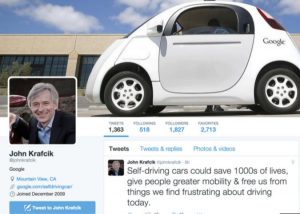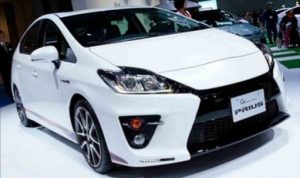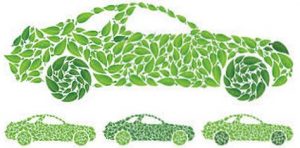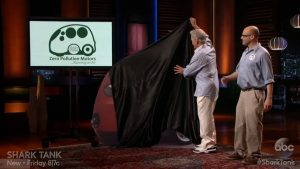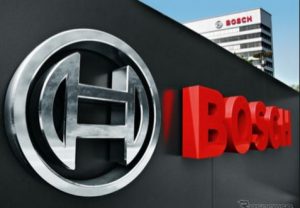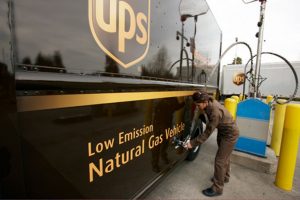by Jon LeSage, editor and publisher, Green Auto Market
Here’s my take on the 10 most significant and interesting occurrences during the past week…….
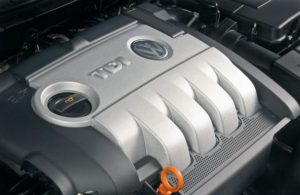 VW recall: Volkswagen was hit hard Friday by a recall order from the Obama administration, claiming the German automaker covered up the truth about its “clean diesel” models sold in the U.S. The U.S. Environmental Protection Agency (EPA) issued a notice of violation to Volkswagen, and accused the company of installing software in its cars known as “defeat devices” in 4-cylinder Volkswagen and Audi diesel cars from model years 2009-2015. EPA says the device was set up to only turn on emissions control systems when the car is undergoing official emissions testing; the controls are turned off during normal driving, when the vehicles pollute far more heavily than reported by the OEM, according to EPA. The recall, which won’t go into effect immediately and is awaiting detailed guidelines from EPA, affects about 482,000 cars in the U.S., will eventually cost the company about $18 billion to repair, and could include a $37,500 fine per vehicle. Affected diesel models include the 2009-15 Volkswagen Jetta, 2009-15 Beetle, 2009-15 Golf, 2014-15 Passat and 2009-15 Audi A3. When you review diesel passenger vehicle sales in the U.S., you’ll see that the recalled models make up a large share of sales; it’s likely this crisis will hurt clean diesel vehicle sales. BMW and Daimler have issued statements saying that their diesel cars are complying with EPA rules. Near the end of the business day yesterday, The Detroit Bureau reported that the U.S. Justice Department has launched a probe into allegations Volkswagen intentionally rigged emissions tests of a number of diesel-powered vehicles sold in the U.S. market.
VW recall: Volkswagen was hit hard Friday by a recall order from the Obama administration, claiming the German automaker covered up the truth about its “clean diesel” models sold in the U.S. The U.S. Environmental Protection Agency (EPA) issued a notice of violation to Volkswagen, and accused the company of installing software in its cars known as “defeat devices” in 4-cylinder Volkswagen and Audi diesel cars from model years 2009-2015. EPA says the device was set up to only turn on emissions control systems when the car is undergoing official emissions testing; the controls are turned off during normal driving, when the vehicles pollute far more heavily than reported by the OEM, according to EPA. The recall, which won’t go into effect immediately and is awaiting detailed guidelines from EPA, affects about 482,000 cars in the U.S., will eventually cost the company about $18 billion to repair, and could include a $37,500 fine per vehicle. Affected diesel models include the 2009-15 Volkswagen Jetta, 2009-15 Beetle, 2009-15 Golf, 2014-15 Passat and 2009-15 Audi A3. When you review diesel passenger vehicle sales in the U.S., you’ll see that the recalled models make up a large share of sales; it’s likely this crisis will hurt clean diesel vehicle sales. BMW and Daimler have issued statements saying that their diesel cars are complying with EPA rules. Near the end of the business day yesterday, The Detroit Bureau reported that the U.S. Justice Department has launched a probe into allegations Volkswagen intentionally rigged emissions tests of a number of diesel-powered vehicles sold in the U.S. market.- Frankfurt Motor Show highlights: Long before the “clean diesel” crisis started, Volkswagen decided to focus on “electrified” versions of its Volkswagen and Audi vehicles at the benchmark annual Frankfurt car show. “Every car will be electrified,” said Ulrich Hackenberg, the board member overseeing technical development at Audi, and this would include hybrids, plug-in hybrids, and battery-electric variations replacing a few conventional gasoline and diesel models. The Porsche and Bentley brands will also be rolling out battery-powered models……. BMW gained a lot of attention with comments about its i Series lineup soon seeing big announcements from the automaker. Until then, the BMW 330e will fill that space; this new model uses the eDrive plug-in technology from its i3 and i8 models. The plug-in hybrid gets 252 hp and 310 pound-feet torque from its electric motor and 2.0L four-cylinder engine. Rolls-Royce Motor Cars is looking into bringing an electric vehicle to market as tighter emissions regulations on automakers are being enforced in Europe and the U.S. Finding ranges acceptable to customers will be necessary to go forward, said Torsten Muller-Otvos, head of the BMW AG unit……. Tesla Motors is finding Germany a tough market to go beyond looking cool into turning over strong sales – only 958 of the Tesla Model S units had been sold in that country since the beginning of the year. To make its upcoming Model X more appealing in Germany and other markets, Tesla recently changed the available range up from 240 to a maximum of 250 miles per charge using the optional 90-kilowatt-hour battery pack.
- Drive Electric: More than 100,000 people attended events last week at the fifth annual National Drive Electric Week. More than 170 events in 165 cities in the U.S., Canada, and Hong Kong took place from Sept. 12-20. “Plug-ins are not a partisan issue any more,” said Plug In America’s executive director Joel Levin. “People just love these vehicles and the volunteers putting on these events are keen to educate people about EVs and share their excitement.” Organized by Plug In America, Sierra Club, and the Electric Auto Association, the mission has been to provide a learning experience for interested people from talking to EV owners and participating in ride and drives.
- Underwood wins lifetime achievement award: Energy Vision President Joanna Underwood was given a Lifetime Achievement Award by NGVAmerica during the NGV Achievement Awards last week in Denver. Underwood’s contribution to the clean fuel go back to the 1980s as she became a convincing advocate for the role natural gas can play in displacing diesel in heavy-duty buses and trucks; more recently, Underwood has been a champion for development of renewable natural gas as the lowest carbon commercially viable transportation fuel available today. It was one of 16 awards presented by NGVAmerica honoring outstanding leadership, vision and innovation in advancing natural gas as a transportation fuel.
- The next phase in DME: Ford Motor Co., Oberon Fuels, FVV (Forschungsvereinigung Verbrennungskraftmaschinen e. V.), and other FVV member companies, have partnered on a three-year project to research, analyze, and test the potential of dimethyl ether (DME) and oligomethyl ether (OME) fuels in passenger vehicles and heavy-duty trucks. One of the project’s goals will be also build the world’s first production passenger car powered by DME for on-road testing. Oberon Fuels will make its pilot plant available for the study. Two years ago, this plant produced the first fuel-grade DME in North America. The Volvo Group used that fuel in commercial demonstrations of DME-powered, heavy trucks.
- Apple moving on driverless and electric: An Apple Inc. executive met with California Dept. of Motor Vehicles (DMV) officials to discuss autonomous vehicle regulations, according documents viewed by the Guardian Code-named Project Titan, the hour-long meeting took place on August 17. In other news, Apple has chosen 2019 as the target for finalizing its electric car. The company will be tripling its 600-person team made up of dozens of experts on electric cars and autonomous driving systems; there’s no word yet on whether Apple will be manufacturing its own cars or providing technologies to at least one automaker partner to build the vehicles.
- The role of digital cockpits: During a conference on autonomous vehicles and connected cars, Automotive Digest did video interviews with a series of technology suppliers, including this one with Dave Anderson of NVIDIA. Driving all the displays found in tomorrow’s cars requires a powerful computer, and automakers need a solution to get to market fast with the low costs. Anderson talks about the company’s platform, NVIDIA DRIVE CX, a digital cockpit that harmonizes safety, comfort, and user experience in one platform.
- Extended alt-fuel range for paratransit: ROUSH CleanTech has developed an extended range fuel tank for the Ford E-450 chassis with the advantage of less fuel stops to smooth out trips for riders. With 64 usable gallons of propane autogas, the new tank holds 56% more fuel than the standard 41-usable gallon tank option. “We listened to our paratransit customers who wanted the Ford E-450 chassis, yet also needed more autogas fuel capacity,” said Todd Mouw, vice president of sales and marketing. “With this extended range fuel tank, we offer the longest driving range for this model — plus an extended warranty for those customers.” The new tank is built on Ford’s 6.8L V10 engine, the Ford E-450 with extended range fuel system comes with an extended 5-year, 100,000-mile warranty exclusively for the transit industry.
- How autonomous tech in EVs can lower battery costs: Plug-in electric vehicles can save up to $1,800 in battery costs, or extend driving range by 24 miles with the addition of autonomous features like self-parking, according to a new report from Lux Research. Autonomous features – including self-parking – may boost fuel efficiency by as much as 10%, when compared with human drivers. “Many buyers of electric cars, such as those who buy the expensive Tesla Model S, are willing adopters of more autonomous driving technology,” said Maryanna Saenko, Lux Research Analyst and lead author of the report titled, “Electric Car, Drive Thyself: How Autonomous Systems and Plug-in Vehicles Will Converge.”
- Mazda SkyActiv expects big fuel economy gain: While its claim will be carefully tested in light of the recent Volkswagen debacle, Mazda is making a bold claim. The next generation of its SkyActiv engines will increase by 30% in fuel efficiency, company president Masamichi Kogai said during an interview with UK publication Auto Express at the Frankfurt Motor Show. This should start by 2018 and will probably be the main focus of Mazda’s fuel-efficient compliance strategy. Its current SkyActiv models (including the Mazda3) have so far come out pretty well in reports.




